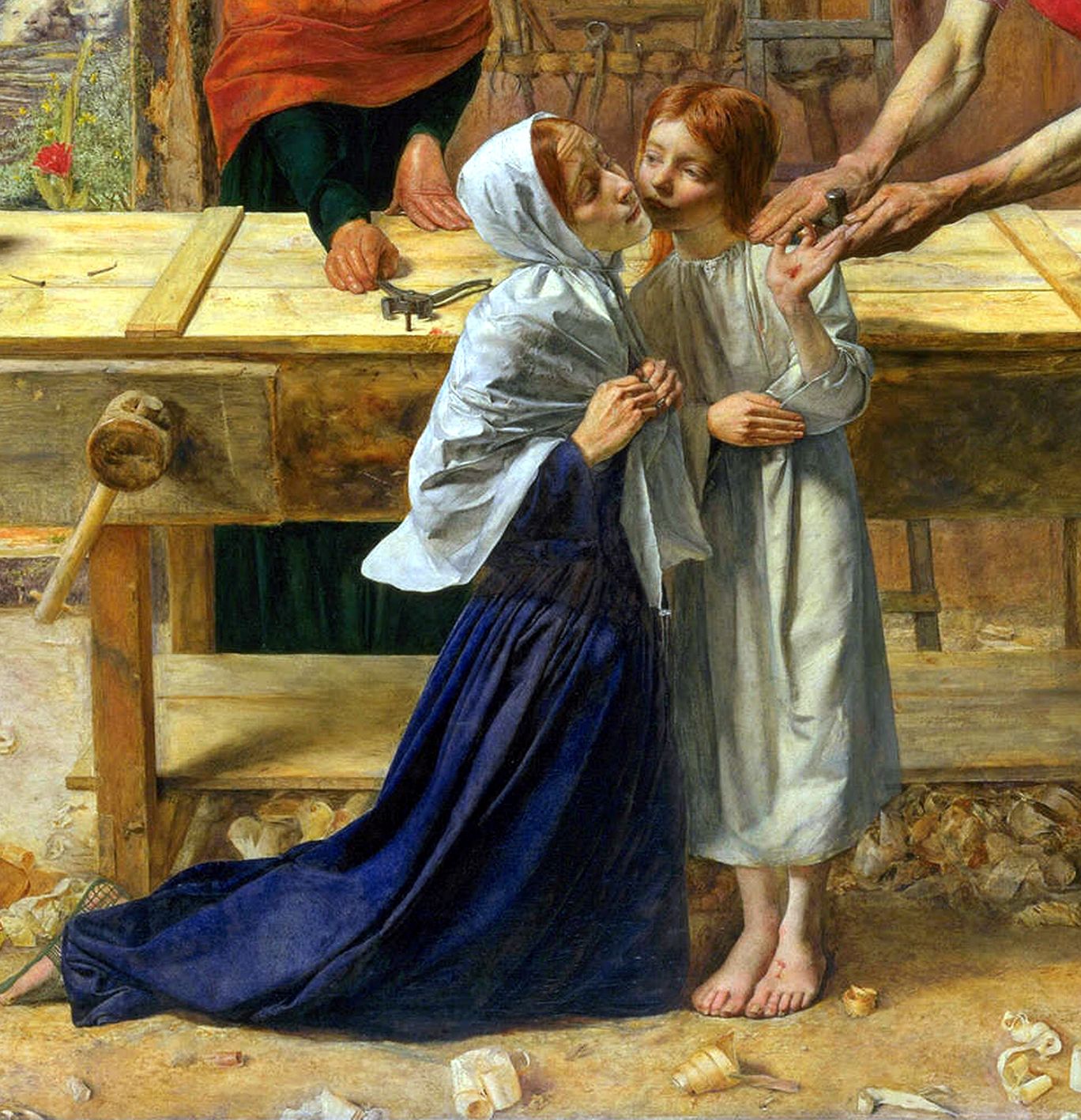ESSAY | Why were the Pre-Raphaelites so shocking?
“Pre-Raphaelite paintings are today seen as uncomplicatedly beautiful images. But when they were first painted in the mid 19th century, they were regarded as assaults on the eye, objectionable in terms of their realism and morally shocking.
Charles Dickens was one of the disapproving critics. He described the figure of the Virgin Mary in John Everett Millais’s “Christ in the House of His Parents” (image above and right) as a degenerate type, one who was ‘horrible in her ugliness.’
Whereas other artists tended to idealize religious figures, the Pre-Raphaelites painted them with unprecedented realism, detailing peculiarities of physiognomy and character, so people read them in terms of the model rather than in terms of the person that particular model was impersonating. Sometimes the artist’s approach was considered sacrilegious or even blasphemous.
The artists used bright colors so their pictures stood out against other works in an exhibition, demanding people’s attention. The Pre-Raphaelites were self-publicists, seeking controversy and attention…” more
SOURCE: TATE
RELATED PROGRAMMING
Art Talks with Rebecca Albiani
The Pre-Raphaelite Brotherhood | March 20 | 11am
William Morris: The Revolutionary | April 17 | 11am
The Arts and Crafts Movement: Form, Function, and Influence | May 15 | 11am

